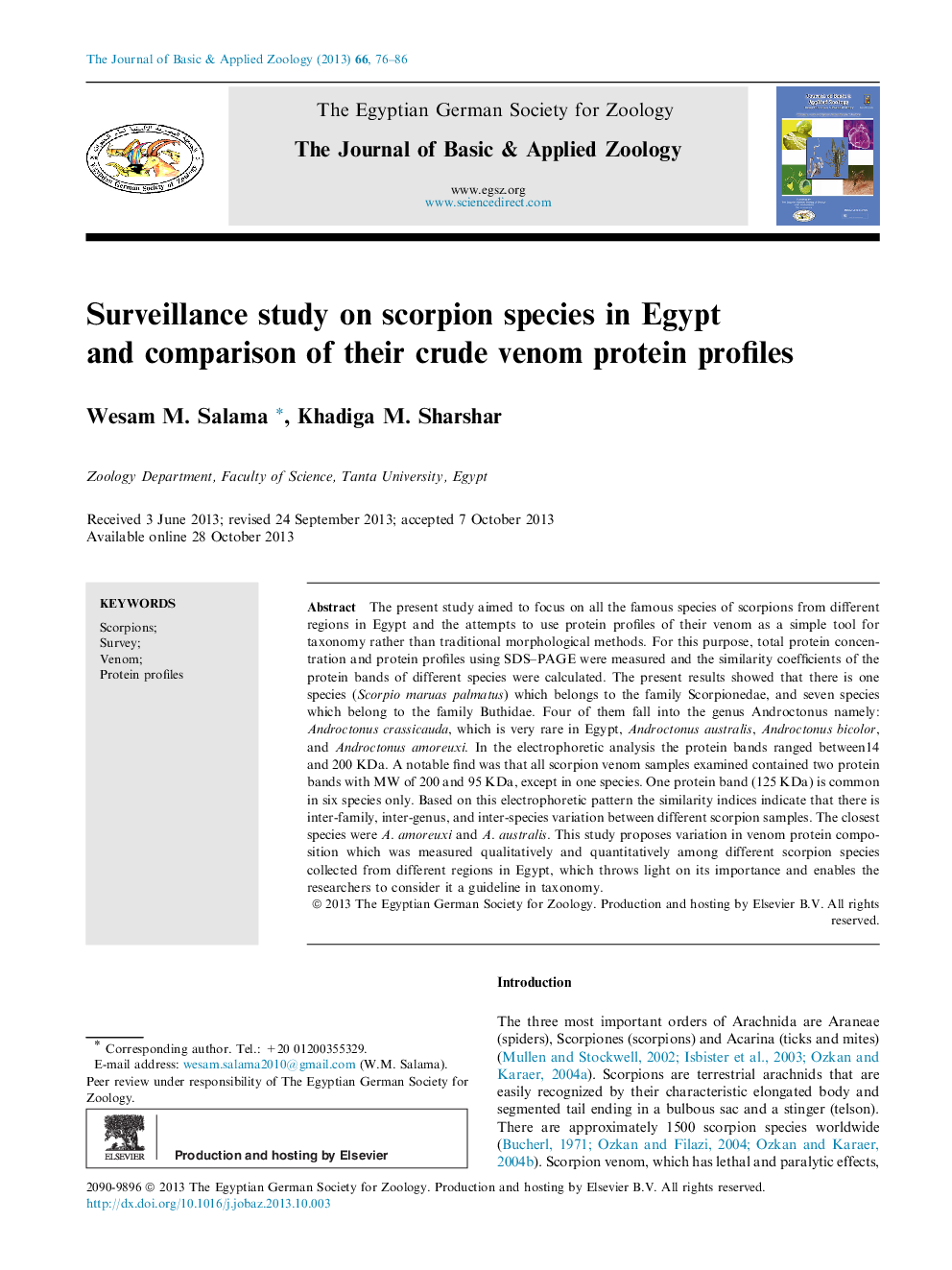| کد مقاله | کد نشریه | سال انتشار | مقاله انگلیسی | نسخه تمام متن |
|---|---|---|---|---|
| 4493564 | 1623673 | 2013 | 11 صفحه PDF | دانلود رایگان |

The present study aimed to focus on all the famous species of scorpions from different regions in Egypt and the attempts to use protein profiles of their venom as a simple tool for taxonomy rather than traditional morphological methods. For this purpose, total protein concentration and protein profiles using SDS–PAGE were measured and the similarity coefficients of the protein bands of different species were calculated. The present results showed that there is one species (Scorpio maruas palmatus) which belongs to the family Scorpionedae, and seven species which belong to the family Buthidae. Four of them fall into the genus Androctonus namely: Androctonus crassicauda, which is very rare in Egypt, Androctonus australis, Androctonus bicolor, and Androctonus amoreuxi. In the electrophoretic analysis the protein bands ranged between14 and 200 KDa. A notable find was that all scorpion venom samples examined contained two protein bands with MW of 200 and 95 KDa, except in one species. One protein band (125 KDa) is common in six species only. Based on this electrophoretic pattern the similarity indices indicate that there is inter-family, inter-genus, and inter-species variation between different scorpion samples. The closest species were A. amoreuxi and A. australis. This study proposes variation in venom protein composition which was measured qualitatively and quantitatively among different scorpion species collected from different regions in Egypt, which throws light on its importance and enables the researchers to consider it a guideline in taxonomy.
Journal: The Journal of Basic & Applied Zoology - Volume 66, Issue 2, March 2013, Pages 76–86